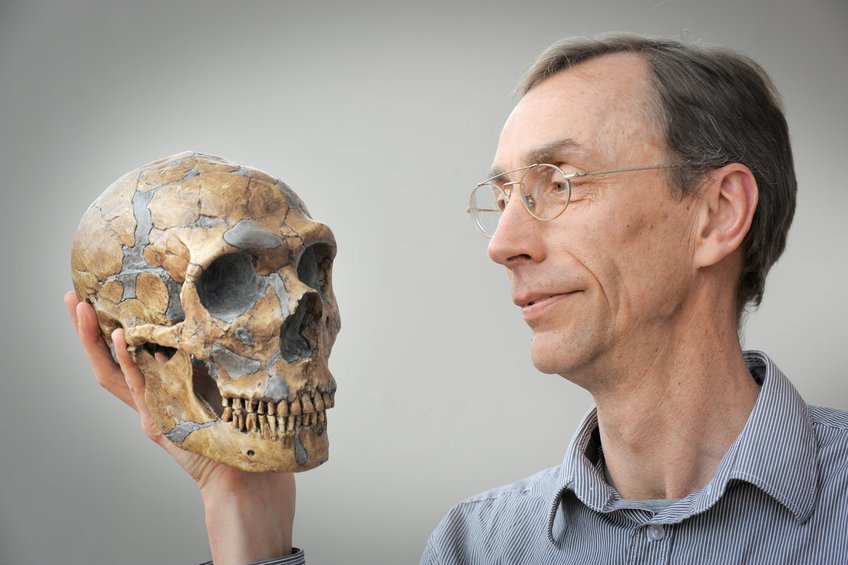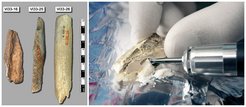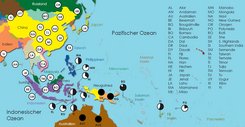
The Neandertal Genome Project
In 1997, Svante Pääbo, then at the Ludwig Maximilian University in Munich, analyzed DNA from the mitochondria of a Neandertal. This was the first time DNA from an extinct form of humans could be studied. In 2006, he initiated the “Neandertal Genome Project” at the Max Planck Institute for Evolutionary Anthropology in Leipzig. With financial support from the Max Planck Society, Pääbo and his colleagues developed methods to more efficiently extract and analyze DNA fragments from ancient remains with the ultimate goal to study the complete genome of Neandertals.
The scientists initially focused on the DNA in the mitochondria which is small and particularly easy to retrieve. In 2008, they published the first fully decoded mitochondrial genome of a Neandertal. The analysis showed that it fell outside the variation of mitochondrial genomes in humans living today. It therefore did not indicate that Neandertals and modern humans would have mixed with each other.
This changed in 2010, when the team was able to publish a preliminary version of the complete Neandertal genome. This showed that the Neandertal genes had been passed on to people living outside whose genetic roots are outside Africa.
Discovery of the Denisovans

Another result of the project was the discovery of a previously unknown extinct human group, the Denisovans, based on a genome sequence determined from a small bone found at Denisova Cave in Southern Siberia. Denisovans were distant relatives in Asia to Neandertals and passed on genes to present-day people in Asia and Oceania. In 2013, the researchers completed the project with the publication of a high-quality version of the genome of a 50,000-year-old Neanderthal. Never before had researchers analyzed the genome of an extinct life form in such high quality.
The Neandertal and Denisovan genomes have allowed the history these extinct human forms and their interactions with each other and with modern humans to be elucidated. They have also made it possible to discover the medical and other consequences of genetic variants passed on by Neandertals and Densiovans to present-day people.














